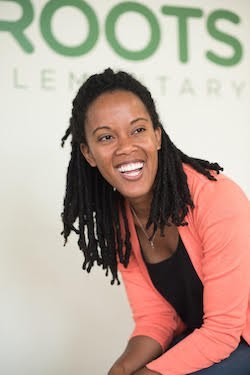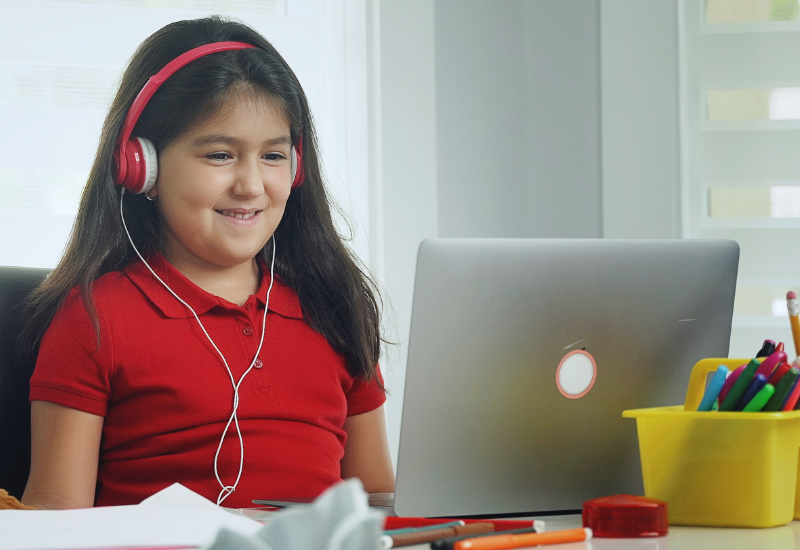Roots Director of Operations and Innovation Discusses the "Why" and the "How" of Tech Tool Development
Roots Director of Operations and Innovation, Jill Tew, shares the team's philosophy for understanding technology needs, doing diligence on existing products, and developing tools to fill gaps.

Transcript: Jill Tew: Whole process, we were thinking about kind of backwards mapping from the model that we wanted and what it was going to look like for scholars to experience this and we were working with the DPS Imaginarium had a great kind of series of full-day sessions because different schools were thinking about either creating a brand new model like we were, or shifting from a more traditional program to piloting some ideas that are kind of pushing the limits of personalization. So, John and I had a lot of time together just kind of thinking and blue-skying and trying to envision what this is going to look like, and when we finally got to the technology behind that, we were like, “Okay, there’s organizations out there and companies out there like Amplify who build scheduling solutions and there’s a lot of master schedule apps out there – they’re all more kind of middle school or high school oriented and they don’t really allow for the dynamism that we need out of this solution.” But we did some research – again, getting to my earlier point – we don’t need to recreate something that’s already out there. So, first let me go do a thorough kind of market overview of what’s already out there. What can we use – maybe build onto? And, unfortunately, came back with very little. Because our model is different, right? And there’s going to be parts of it that we’re going to have to do in-house because nobody does this yet, and that’s not a reason for us to stop or kind of shift to fit the box that already exists out there. So, Jon and I were sitting, thinking about, “Okay, well, if we build this custom – getting quotes from people, it might be like ten or $15,000.00 – really expensive. It’s definitely not in our budget for Year One, so what can we do?” And like sitting there thinking, “Well, we use a calendar app to tell us where to go, and what to do, and who we’re going to be doing it with, if we’re going to meetings,” that sort of thing. And me, kind of thinking to my former product manager days, just trying not to reinvent a wheel that already exists. Google is a very open organization and they have APIs for pretty much everything that they roll out. So, why don’t we look at Google calendars API to see what information it would pass to us and then think about what it needs to look like for our scholars and for our teachers? So, that was kind of the beginning of it. Knowing that we weren’t going to do anything-- that was too kind of development-intensive, because we were going to use this API – I bet a lot of junior developers and more seasoned developers, too, but a lot of junior developers – a lot of what they’re doing when they’re first learning how to develop is playing with APIs and making different things talk to each other in cool and new ways. I did some thinking about who could be out there to kind of help us with this initial prototype and so in the Denver Boulder area, there’s a number of –kind of developer boot camps that are teaching complete novices how to be junior developers. And so, got in touch with a couple of them and was able to post a job description for what we were looking for for some temporary work, and found a fantastic junior developer, Laura, who was great to work with and very receptive to taking on this challenge and saying, “Okay, you need it to do X, Y, Z – I never heard of a school that does that, but sure. Let’s go for it” with no program to show her because this was Year Zero and we had no model for it. But she was great and with very detailed kind of specs on what we were looking for, she rolled out a couple of different versions of it that I then began to take to ECE programs and preschool programs at schools we were close with to test this out on four year olds and say, “Hey, if I show you this on an iPad, or I show it to you on a piece of paper, can you tell me where you’re going? Can you use the color coding to say, ‘The green thing on this piece of paper means I’m going to the green station where I’m going to play with blocks.’” All of those assumptions that we’re kind of vetting over the course of the development process – both on the tech side and the human systems side – really work hand-in-hand to create the tool that we have today.
Explore More

Gulfport Virtual Academy's Approach to Targeted, Relevant Virtual Learning
Through their participation in TLA's Strategy Lab: Virtual & Hybrid program, Gulfport Virtual Academy designed and piloted a program to...

Highline Virtual Academy's Approach to Student Expectations and Engagement in Virtual Learning
Through their participation in TLA's Strategy Lab: Virtual & Hybrid program, Highline Virtual Academy sought to establish common...

Gathering Family Feedback on Edtech Usage
Edtech tools can serve as a channel to involve families in their students’ lives, strengthen the home-school connection, and provide...